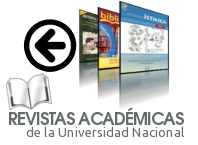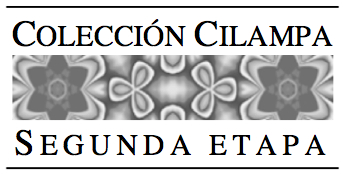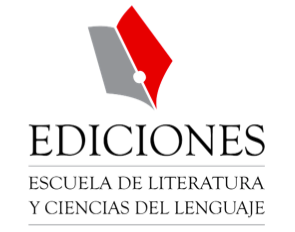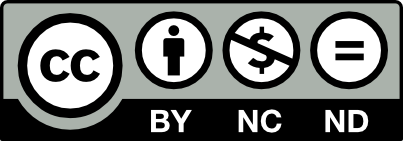Percepciones estudiantiles sobre los portafolios digitales en Inglés con Fines Específicos
DOI:
https://doi.org/10.15359/rl.2-66.6Keywords:
constructivism, reading comprehension, glossaries, digital portfoliosAbstract
A description is provided of the constructivist insights of four student populations using digital portfolios in a reading comprehension course. The results highlight the use of Google Docs as a digital platform to create two digital portfolios: a Reading Comprehension Portfolio (specific techniques) and a Vocabulary Portfolio (technical glossaries with agronomic jargon). They served as pedagogical tool to challenge students to participate in their own learning process and interact dynamically in a technological setting.
References
Abrami, Philip and Helen Barrett. “Directions for Research and Development on Electronic Portfolio,” Canadian Journal of Learning and Technology 31, 3 (2005): 1-15. DOI: https://doi.org/10.21432/T2RK5K.
Amaya, Pablo, et al. “Educational e-Portfolios: Uses and Tools,” Procedia-Social and Behavioral Sciences 93 (2013): 1169-1173. DOI: 10.1016/j.sbspro.2013.10.009.
Amos, John. Doing Qualitative Research in Education Settings. Albany: State University of New York Press, 2002.
Bax, Stephen. “Normalisation Revisited: The Effective Use of Technology in Language Education,” International Journal of Computer-Assisted Language Learning and Teaching 1, 2 (2011): 1-15. DOI: http://hdl.handle.net/10547/224999.
Buzzetto-More, N. “Assessing the Efficacy and Effectiveness of an e-Portfolio Used for Summative Assessment,” Interdisciplinary Journal of ELearning and Learning Objectives 6 (2010): 61-85. DOI: https://doi.org/10.28945/1164.
Eaton, Sarah. Global Trends in Language Learning in the Twenty-first Century. Calgary: Onate Press, 2010.
Freire, Paulo. Pedagogy of the Oppressed. New York: Herder and Herder, 1970.
Hanum, Siti Rashidah, et al. “ePortfolio: Descriptive Survey for Contents and Challenges,”
International Journal of Emerging Technologies in Learning 11, 1 (2016): 4-10. DOI: 10.3991/ijet.v11i1.4900.
Henderson, Michael, et al. “What Works and Why? Student Perceptions of ‘Useful’ Digital Technology in University Teaching and Learning,” Studies in Higher Education 42, 8 (2017): 1-13. DOI: https://doi.org/10.1080/03075079.2015.1007946.
Janosik, Stephen M. and Tara E. Frank. “Using ePortfolios to Measure Student Learning in a Graduate Preparation Program in Higher Education,” International Journal of ePortfolio 3 (2013): 13-20.
Kunnari, Irma, and Lasse, Lipponen. “Building Teacher-Student Relationship for Wellbeing,” Lifelong Learning in Europe 2, 1 (2010): 63-71.
Lambert, Connie, et al. “E-Portfolios in Action,” Kappa Delta Pi Record 43, 2 (2007): 76-83. DOI: https://doi.org/10.1080/00228958.2007.10516466.
Laurikainen, Marja, and Irma Kunnari. “ePortfolios as a Way to Empower Students and Bridge them to Future Work Places,” Journal of Finnish Universities of Applied Science, June 27, 2018, <https://uasjournal.fi/in-english/eportfolios-way-to-empower-students>.
Morales, Lucia, and Amparo Soler-Dominguez. “A Reflection on the Use of ePortfolios in Business Studies Programmes,” Irish Journal of Academic Practice 5 (2016): 1-2. DOI: 10.21427/D7D14S.
Patel, Chirag. “Use of Multimedia Technology in Teaching and Learning Communication Skill: An Analysis,” International Journal of Advancements in Research and Technology 2, 7 (2013): 116-123.
Pun, M. “The Use of Multimedia Technology in English Language Teaching: A Global Perspective,” International Journal of Interdisciplinary Studies 1, 1 (2013): 29-38. DOI: 10.3126/ctbijis.v1i1.10466.
Ring, Gail, and Barbara Ramirez. “Implementing ePortfolios for the Assessment of General Education Competencies,” International Journal of ePortfolio 2 (2012): 87-97.
Spradley, James. The Ethnographic Interview. New York: Holt, Rinehart & Winston, 1979.
Strudler, Neal, and Keith Wetzel. “Costs and Benefits of Electronic Portfolios in Teacher Education: Student Voices,” Journal of Computing in Teacher Education 22, 3 (2006): 99-108.
Van-Wyk, Micheal. “An e-Pportfolio as Empowering Tool to Enhance Students’ Self-directed Learning in a Teacher Education Course: A Case of a South African University,” South African Journal of Higher Education 31, 3 (2017): 274-291. DOI: 10.20853/31-3-834.
Yao, Yuankun et al. “Validity Evidence of an Electronic Portfolio for Preservice Teachers,” Educational Measurement: Issues and Practice 27, 1 (2008): 10-24. DOI: 10.1111/j.1745-3992.2008.00111.x.
Published
How to Cite
Issue
Section
License
Principios básicos:
a) Los autores conservarán los derechos de propiedad intelectual de sus aportes o artículos;
b) Cada autor deberá indicar expresamente que ese artículo lo entrega, en calidad de exclusividad, a la revista LETRAS; y
c) La revista Letras se reservará el derecho de autorizar para fines académicos no lucrativos la reproducción y uso de ese material por parte de terceros, siempre que éstos indiquen expresamente la procedencia del artículo. Todo ello se postula en concordancia con la normativa de "Creative Commons Atribution License", recomendada.

This work is licensed under a Creative Commons Attribution-NonCommercial-NoDerivs 3.0 Costa Rica License.















